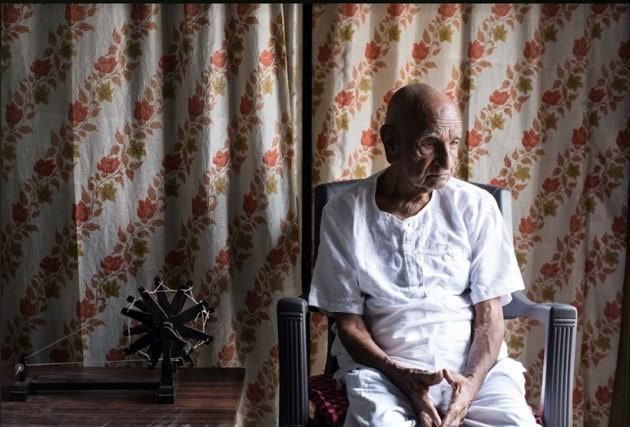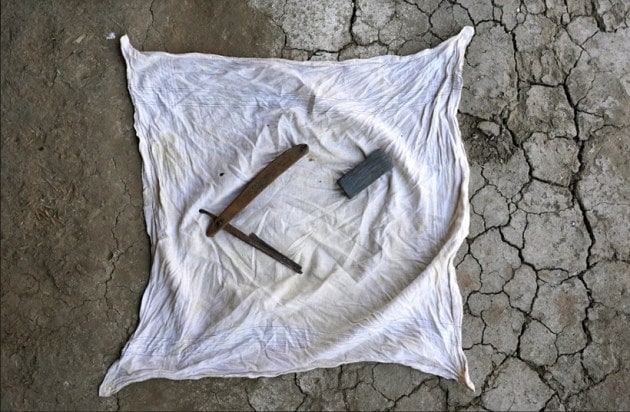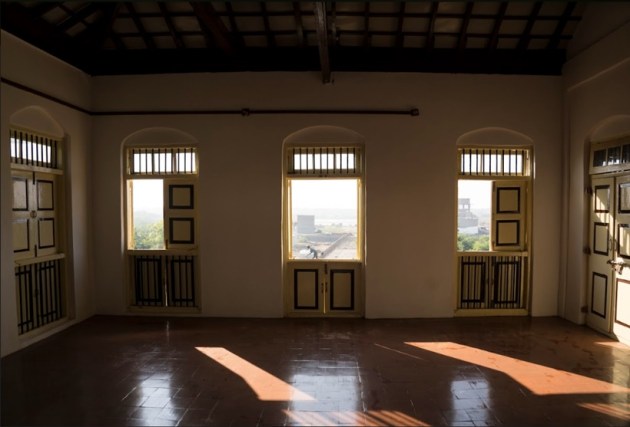This photographer retraced the path of Dandi March 90 years later, and the visuals are stunning
To mark the 91st anniversary of the march, Navajivan Trust has published the book ‘23 Grams of Salt: Retracing Gandhi’s March to Dandi’ by Anuj Ambalal
June 8, 2022 18:00 IST 1 / 9
1 / 9The Salt March, conceived and led by Mohandas K Gandhi, is regarded as one of the defining movements in the history of the Indian independence struggle. On March 12, 1930, it commenced from the Sabarmati Ashram in Ahmedabad, and traversed more than 240 miles through the heart of South Gujarat. It concluded at the small coastal village of Dandi. To mark the 91st anniversary of the march, Navajivan Trust has published the book ‘23 Grams of Salt: Retracing Gandhi’s March to Dandi’ by Anuj Ambalal; An exhibition of the photo essay was also organised at Art Gallery, Kamaladevi Complex, India International Center. (Anuj Ambalal)
 2 / 9
2 / 9Anuj Ambalal set out on a mission to traverse through these Salt March sites spread over 100 villages. "I started thinking about those buildings, villages, and people: would they still be around after all these years? If so, in what state might they be? This benign curiosity soon turned into an obsession and it led me to undertake my own journey in search of the Salt March sites," he said in a press statement; Included in the display were copies of personal letters that Gandhiji wrote during the March; and short video film interviews of some of the surviving witnesses of the March; Dhulaji Vaghri milked a goat for Gandhi. (Anuj Ambalal)
 3 / 9
3 / 9Gandhi Temple, Gajera (Anuj Ambalal)
 4 / 9
4 / 9Ginning mill where marchers spent a night. (Anuj Ambalal)
 5 / 9
5 / 9The photo essay strives to "build a visual narrative of the route taken by the marchers by depicting the villages, people, environment, landscapes, trees and buildings, as they exist". This is what the marchers would see if they were to set off on the same route today, according to Anuj Ambalal; Lakshmansinh Chavda walked with marchers from Sabarmati Ashram (Anuj Ambalal)
 6 / 9
6 / 9Razor and sharpening stone used by barber Narottam Valand to shave. (Anuj Ambalal)
 7 / 9
7 / 9According to Anuj Ambalal, many of the original buildings have been demolished for various reasons and replaced with new construction. "Rural youth have migrated, a movement that has fractured the tradition of the oral history told from one generation to the next. Over a period of almost two years, I covered more than eighty villages through which the march had passed. On my travels, I met mostly second-generation locals in their 70s and 80s, who narrated me stories of the march that they had heard from their elders. This information has not been passed on to the next generation and is likely to be lost in the coming years," he rued; Room where Gandhi rested, Boriavi (Anuj Ambalal)
 8 / 9
8 / 9On the challenges he faced while working on the project, Anuj Ambalal reminisced that the most difficult of them all was self-doubt, and it persisted throughout a-year-and-half of principal shooting. Lack of adequate information required to locate and identify the historic locations in the present day was also a big concern. I had to rely on descriptions given in books, oral narratives of the locals and most importantly, my own judgment, he expressed in the statement; Room where Gandhi spent the last night of the march at Dandi (Anuj Ambalal)
 9 / 9
9 / 9Spot where Gandhi wrote his famous letter to Viceroy, Karadi (Anuj Ambalal)











